Have you ever come across a puzzle that got you to doubt a thinking of your own? The psychology riddles are just that; they test your mind and present to you quite interesting facts of how we see the world and interpret things. Within this post, I have gathered more than 125 riddles on psychology along with answers, and each of these riddles will help you to think and, possibly, to learn something new about human mind.
With a connection to psychology as a graduate who is interested in getting abstract ideas simplified, I have been doing some research on how our mind functions over the years. Using riddles and in particular ones based on psychological principles provides a special means of approaching them in the form of a game. This set is a selection of brain teaser for students, teachers who are seeking classroom resources, and people who enjoy a nice brain teaser.
My works have also been published on the educational websites such as MindMatters.com and were received with work commendations regarding their approach of education and entertainment balance. Ara mi, we are going to explore the world of psychology riddles and see how the mind works one riddle at the time.
My Experience with Psychology Riddles
I vividly recall my first encounter with a psychology riddle: “A man is afraid to go home because there’s a man in a mask there. Why?” The answer—they’re playing baseball, and the man in the mask is the catcher—blew my mind. It enabled me to understand that we often go into the wrong path through our assumptions, such as the one caused by confirmation bias.
It was at that point that I developed a fascination with the riddles of psychology, and in the process I began to compose and gather riddles encountering a broad range of topics like memory, as well as social interactions. These are years of compiling riddles and trying and testing them like how devilishly hard yet enlightening are they can be like cognitive biases.
125+ Psychology Riddles with Answers
To find your psychology puns, they are below with each having a theme categorizing them. Every riddle has the answer to it and a description of the psychological concept depicted in it. This is only a preview of the selection, there are more than 125 riddles in the complete set which discusses many aspects of human intellect and behavior. For more brain teasers, explore mysterious riddles to challenge your thinking further.
Perception and Assumption Riddles
These riddles challenge how you interpret sensory information and make assumptions.
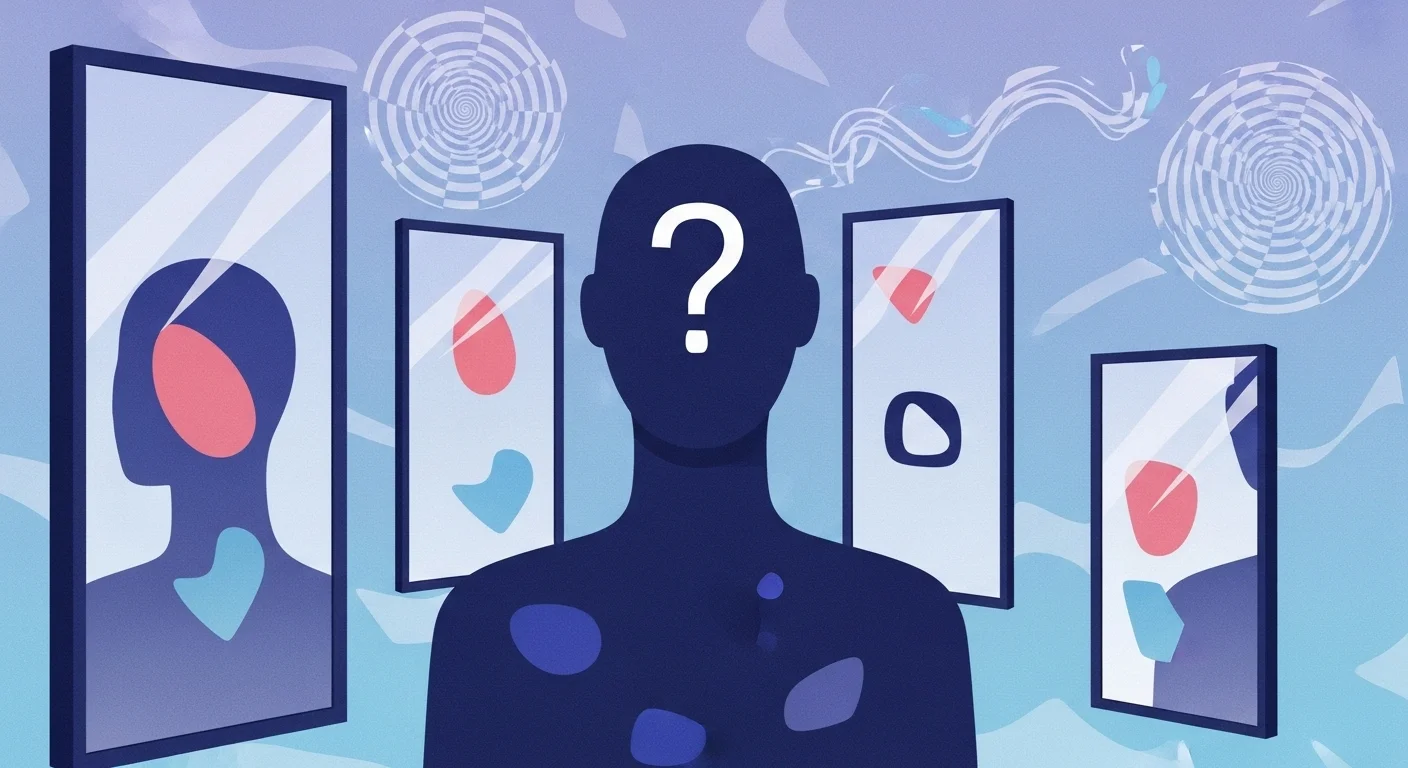
- Riddle: A thief breaks into a house, steals valuables, and leaves unnoticed. The owner never suspects them. Why?
Hint: Consider who might be trusted implicitly.
Answer: The thief is a trusted family member or friend.
Explanation: This illustrates confirmation bias, where we favor information aligning with our beliefs, as studied by Amos Tversky.
- Riddle: You meet someone who seems familiar, but you can’t recall their name. Why does this happen?
Hint: It’s a common memory lapse.
Answer: Tip-of-the-tongue phenomenon.
Explanation: Studied by Roger Brown, this shows how memory retrieval can fail despite feeling close to recalling information.
- Riddle: You see a man hanging from a building by his teeth. How is this possible?
Hint: Think about the context of the situation.
Answer: He’s an acrobat practicing a stunt with a safety harness, holding a rope with his teeth.
Explanation: This plays on perceptual misdirection, where we assume danger but the context is theatrical.
- Riddle: You walk into a room and see a man standing on his head, but he’s not doing a handstand. How is this possible?
Hint: Think about reflections.
Answer: He’s looking at a mirror on the ceiling.
Explanation: This highlights how reflections can distort perception, a concept in visual psychology.
- Riddle: A woman shoots her husband, holds him underwater for five minutes, and hangs him. Yet, they go out for dinner. How?
Hint: Consider the sequence of events.
Answer: She’s a photographer; she shoots a picture, develops it (holds it underwater), and hangs it to dry.
Explanation: This riddle uses misdirection to challenge assumptions, similar to insight problems.
- Riddle: You see a fish in a tank smiling at you. How is this possible?
Hint: Think about what “smiling” means for a fish.
Answer: It’s a goldfish; its mouth naturally looks like a smile.
Explanation: This shows anthropomorphism, where we project human traits onto animals. For more animal-themed puzzles, try sea animal riddles.
- Riddle: A man looks at a portrait and says, “Brothers and sisters have I none, but that man’s father is my father’s son.” Who is in the portrait?
Hint: It’s a family relationship puzzle.
Answer: His son.
Explanation: This tests logical reasoning and challenges assumptions about relationships.
- Riddle: You’re shown two lines of equal length, but one appears longer due to surrounding arrows. What illusion is this?
Hint: It’s a famous visual illusion.
Answer: Müller-Lyer illusion.
Explanation: This demonstrates how context affects perception, a key area in Gestalt psychology.
- Riddle: A clock shows 3:15, but the hour hand is where the minute hand should be for 15 minutes past 3. What time is it really?
Hint: Think about how clocks work.
Answer: It’s 9:45; the hands are swapped.
Explanation: This tests attention to detail and how we interpret visual cues. For more time-related puzzles, check out clock riddles.
- Riddle: A dog walks into a bar without a leash, and the bartender serves the owner without question. Why?
Hint: Consider the type of bar and the dog’s role.
Answer: It’s a legal bar, and the dog is a service animal.
Explanation: This challenges assumptions about settings and highlights implicit trust.
- Riddle: In an experiment, participants see an ambiguous image. Some see a happy face, others a sad one. What does this demonstrate?
Hint: It’s about subjective perception.
Answer: Perceptual set.
Explanation: This shows how prior experiences shape interpretation, as studied in cognitive psychology.
- Riddle: You’re asked to judge a line’s length, but surrounding lines make it look shorter. What illusion is this?
Hint: It’s about context affecting perception.
Answer: Ponzo illusion.
Explanation: This illustrates how perspective influences visual perception.
Memory and Cognition Riddles
These riddles explore how we store, retrieve, and process information.
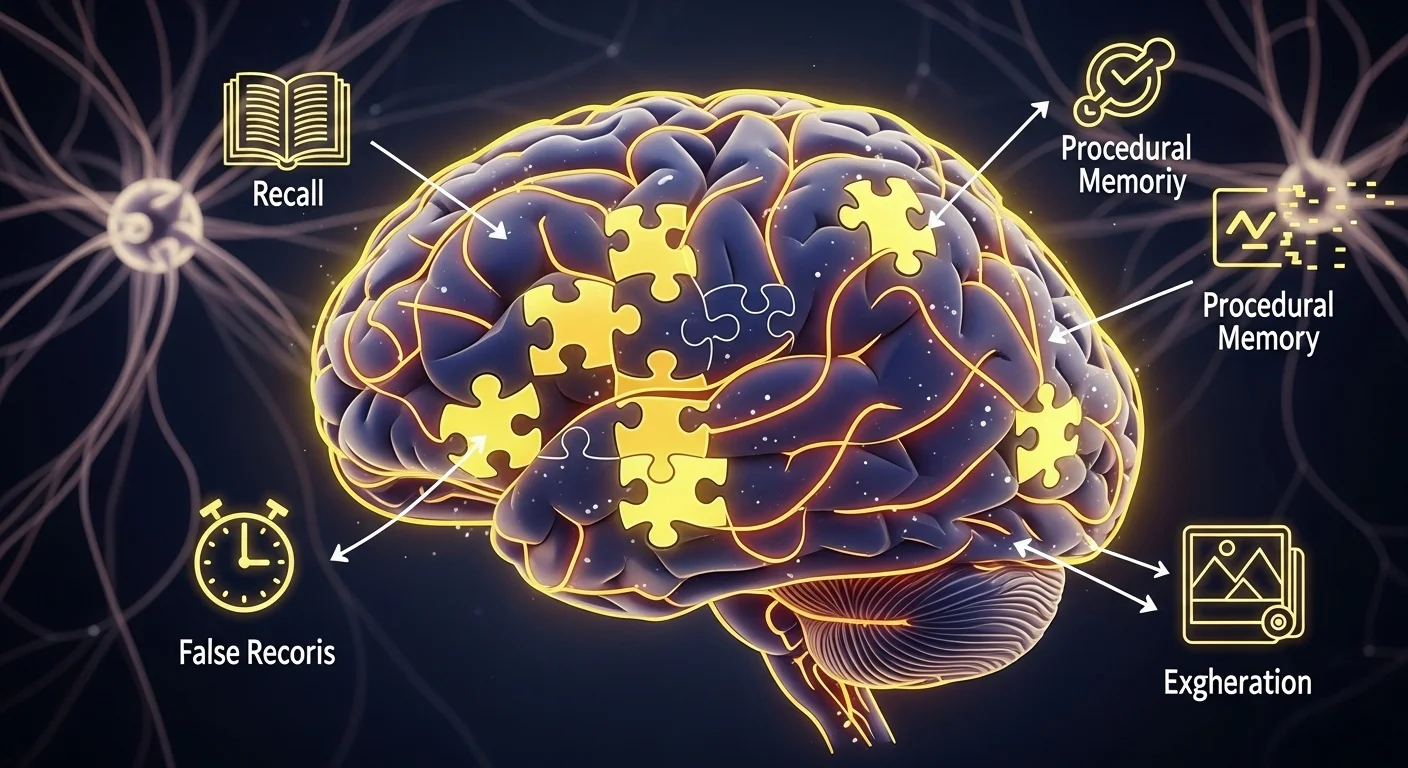
- Riddle: A bookworm eats from page 1 of volume 1 to the last page of volume 10. How many pages did it eat?
Hint: Think about book structure.
Answer: 402 pages (1 from volume 1, 50 from each of volumes 2-9, 1 from volume 10).
Explanation: This insight problem requires shifting mental perspective, as studied in cognitive psychology. For similar puzzles, try library riddles.
- Riddle: You remember a childhood event vividly, but others say it never happened. Why?
Hint: It’s related to memory distortion.
Answer: False memory.
Explanation: Elizabeth Loftus’s research on the misinformation effect shows how memories can be altered.
- Riddle: You remember the first and last items on a list better than the middle ones. What is this called?
Hint: It’s a memory phenomenon.
Answer: Serial position effect.
Explanation: This combines the primacy and recency effects, where early and recent items are recalled better.
- Riddle: You’re asked to recall a phone number but keep forgetting it. What memory system are you using?
Hint: It’s short-term memory.
Answer: Working memory.
Explanation: Working memory, studied by Baddeley, handles temporary information storage.
- Riddle: After learning a list of words, you recall similar words that weren’t on the list. What is this?
Hint: It’s a memory distortion.
Answer: False memory or DRM effect.
Explanation: The Deese-Roediger-McDermott effect shows how related words trigger false recalls.
- Riddle: You can ride a bike but not remember where you learned it. What type of memory is this?
Hint: It’s non-declarative memory.
Answer: Procedural memory.
Explanation: Procedural memory governs skills and habits, often unconscious.
- Riddle: You meet someone and immediately forget their name. What is this phenomenon?
Hint: It’s a common memory lapse.
Answer: Tip-of-the-tongue state.
Explanation: This reflects temporary retrieval failure, as studied by Roger Brown.
- Riddle: You remember where you were during a major event, like 9/11. What is this called?
Hint: It’s a special type of memory.
Answer: Flashbulb memory.
Explanation: Flashbulb memories are vivid but not always accurate, as researched by Brown and Kulik.
- Riddle: After watching a movie, you can’t recall if a scene was in the film or imagined. What might this be?
Hint: It’s related to memory distortion.
Answer: Source confusion.
Explanation: Source confusion occurs when we misattribute the origin of a memory.
- Riddle: You learn a skill like typing and don’t forget it, even after years. What type of memory is this?
Hint: It’s for skills and habits.
Answer: Procedural memory.
Explanation: Procedural memory is long-lasting and implicit, as seen in motor skills.
- Riddle: You remember facts like “Paris is the capital of France” but not yesterday’s breakfast. Why?
Hint: It’s about types of memory.
Answer: Semantic vs. episodic memory.
Explanation: Semantic memory stores facts, while episodic memory stores personal experiences.
- Riddle: After hearing a story, you fill in details that weren’t there based on expectations. What is this?
Hint: It’s a memory distortion.
Answer: Schema-based reconstruction.
Explanation: Schemas shape how we reconstruct memories, often adding details.
Emotional and Social Riddles
These riddles focus on emotions and social interactions.
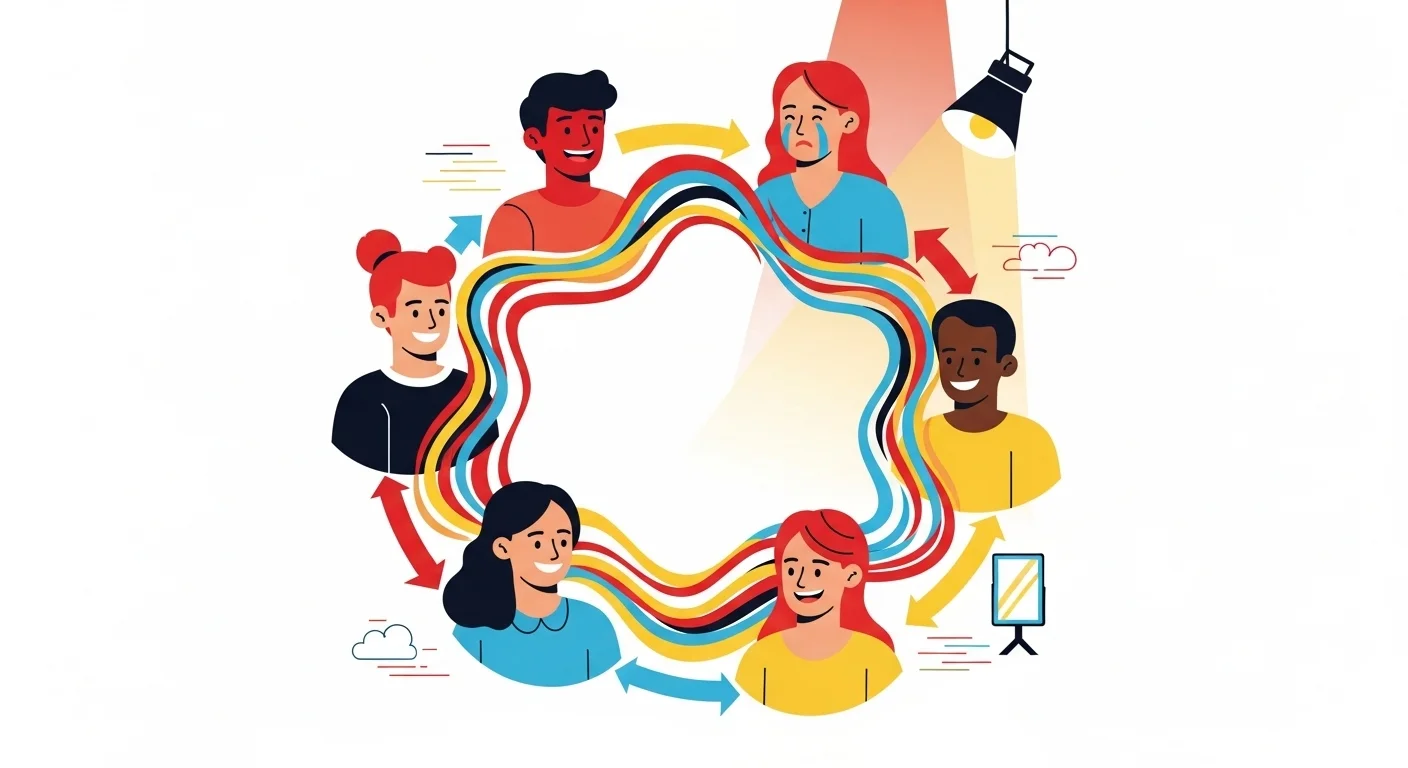
- Riddle: Two people argue passionately without speaking. How?
Hint: It’s about non-verbal communication.
Answer: They’re using sign language or writing notes.
Explanation: This highlights non-verbal communication, studied by Paul Ekman.
- Riddle: You feel like you’re being watched, but no one is around. What’s happening?
Hint: It’s a psychological phenomenon.
Answer: Spotlight effect.
Explanation: Thomas Gilovich’s research shows we overestimate how much others notice us.
- Riddle: You smile at a stranger, and they smile back. What concept explains this?
Hint: It’s reciprocal behavior.
Answer: Reciprocity.
Explanation: Reciprocity is a social norm where actions are mirrored, as studied in social psychology.
- Riddle: In a group, one person starts laughing, and soon everyone is laughing, even though nothing funny happened. What is this?
Hint: It’s a social contagion effect.
Answer: Emotional contagion.
Explanation: Emotional contagion spreads emotions through groups, as researched by Elaine Hatfield.
- Riddle: You feel happy when you see your friend smiling, even if you weren’t happy before. What concept is this?
Hint: It’s about mirroring emotions.
Answer: Empathic accuracy.
Explanation: Empathic accuracy involves understanding and sharing others’ emotions.
- Riddle: Two people are in a room, and one starts crying. The other cries too, without knowing why. What is happening?
Hint: It’s emotional transmission.
Answer: Emotional contagion.
Explanation: This shows how emotions spread unconsciously in social settings.
- Riddle: You feel more confident when dressed well. What concept is this?
Hint: It’s about self-perception.
Answer: Enclothed cognition.
Explanation: Enclothed cognition links clothing to psychological states, as studied by Adam and Galinsky.
- Riddle: You like someone more after they do you a favor, even if you asked for it. What is this called?
Hint: It’s a social psychology principle.
Answer: Ben Franklin effect.
Explanation: This effect suggests doing favors increases liking, as noted by Benjamin Franklin.
- Riddle: You feel sad when watching a sad movie, even though it’s not real. What is this?
Hint: It’s about emotional response to fiction.
Answer: Empathy.
Explanation: Empathy allows us to feel emotions for fictional characters, as studied by Keith Oatley.
- Riddle: In a group, one person tells a joke, and everyone laughs, even if they didn’t find it funny. Why?
Hint: It’s about social norms.
Answer: Social conformity.
Explanation: Conformity drives people to align with group behavior, as shown by Solomon Asch.
- Riddle: You feel more attracted to someone after they reject you initially. What phenomenon is this?
Hint: It’s counterintuitive.
Answer: Reactance.
Explanation: Reactance occurs when restrictions increase desire, as studied by Jack Brehm.
- Riddle: When you mimic someone’s body language, they like you more. What is this called?
Hint: It’s a social psychology concept.
Answer: Chameleon effect.
Explanation: The chameleon effect involves unconscious mimicry, as researched by Tanya Chartrand.
Cognitive Bias Riddles
These riddles highlight biases that skew our thinking.
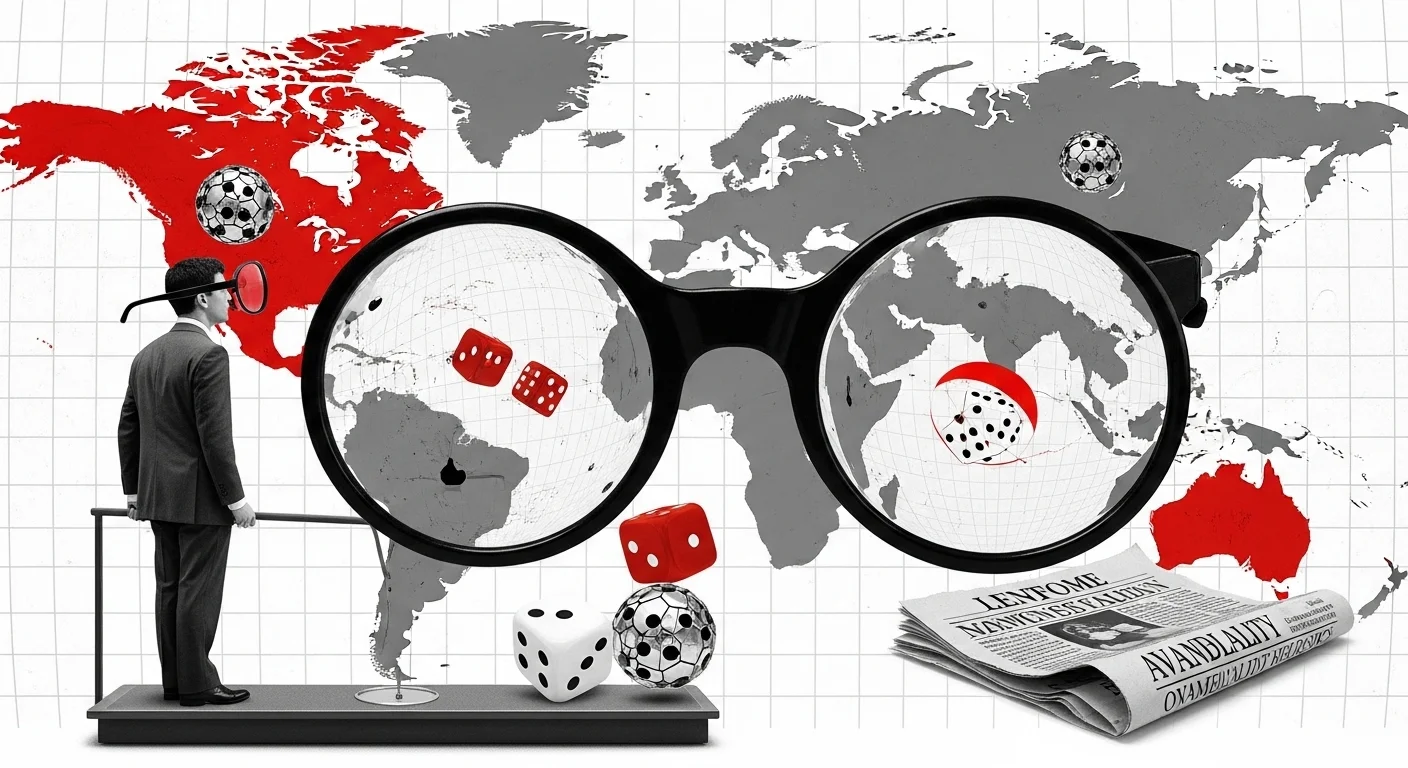
- Riddle: I am a cognitive bias where you believe you’re better than most; I affect self-assessment, often making one boast. What am I?
Hint: It’s about overestimating abilities.
Answer: Overconfidence bias.
Explanation: Studied by Dunning and Kruger, this bias leads to overestimating one’s abilities.
- Riddle: I am a phenomenon where the more you think about not doing something, the more likely you are to do it. What am I?
Hint: It’s about thought suppression.
Answer: Ironic process theory (White Bear Problem).
Explanation: Daniel Wegner’s research shows suppressing thoughts can make them more persistent.
- Riddle: You invest in a stock because your friend says it’s good, even though you know nothing about it. What bias is this?
Hint: It’s about trusting authority or familiarity.
Answer: Authority bias.
Explanation: This bias involves trusting authority figures without scrutiny.
- Riddle: You avoid flying because you heard about a plane crash, even though driving is more dangerous. What bias is this?
Hint: It’s about perceived risk based on memorable events.
Answer: Availability heuristic.
Explanation: This heuristic makes recent or vivid events seem more likely, as studied by Tversky and Kahneman.
- Riddle: You think an expensive product must be of higher quality. What bias is this?
Hint: It’s about price and perceived value.
Answer: Price-quality heuristic.
Explanation: This heuristic links cost to quality, often misleadingly.
- Riddle: You believe luck comes in streaks, like “I’m on a winning streak.” What bias is this?
Hint: It’s about believing in patterns where none exist.
Answer: Gambler’s fallacy.
Explanation: This fallacy assumes random events follow patterns, as studied in probability theory.
- Riddle: You ignore evidence that contradicts your beliefs and focus on supporting information. What bias is this?
Hint: It’s a common reasoning error.
Answer: Confirmation bias.
Explanation: Confirmation bias drives selective attention to confirming evidence, as studied by Tversky.
- Riddle: You think that because two events happened together, one caused the other, even if there’s no logical connection. What is this?
Hint: It’s a logical fallacy.
Answer: Post hoc ergo propter hoc.
Explanation: This fallacy assumes correlation implies causation, a common cognitive error.
- Riddle: You’re more afraid of terrorism than heart disease, even though heart disease is a greater risk. What bias is at play?
Hint: It’s about how we perceive risk.
Answer: Availability heuristic.
Explanation: Vivid media coverage makes terrorism seem more likely, as per Kahneman’s research.
- Riddle: You think that because you’re good at math, you’ll be good at chess, even though they require different skills. What bias is this?
Hint: It’s about generalizing from one area to another.
Answer: Halo effect.
Explanation: The halo effect generalizes competence across unrelated domains.
- Riddle: You believe things are getting worse over time, even without data to support it. What bias might this be?
Hint: It’s about perceiving decline.
Answer: Declinism.
Explanation: Declinism is the tendency to view the past as better, often without evidence.
- Riddle: You think that because you’ve had good luck recently, you’re due for bad luck. What bias is this?
Hint: It’s about balancing luck.
Answer: Gambler’s fallacy.
Explanation: This fallacy assumes random events balance out, as studied in cognitive psychology.
Personality and Trait Riddles
These riddles describe personality traits and their manifestations.
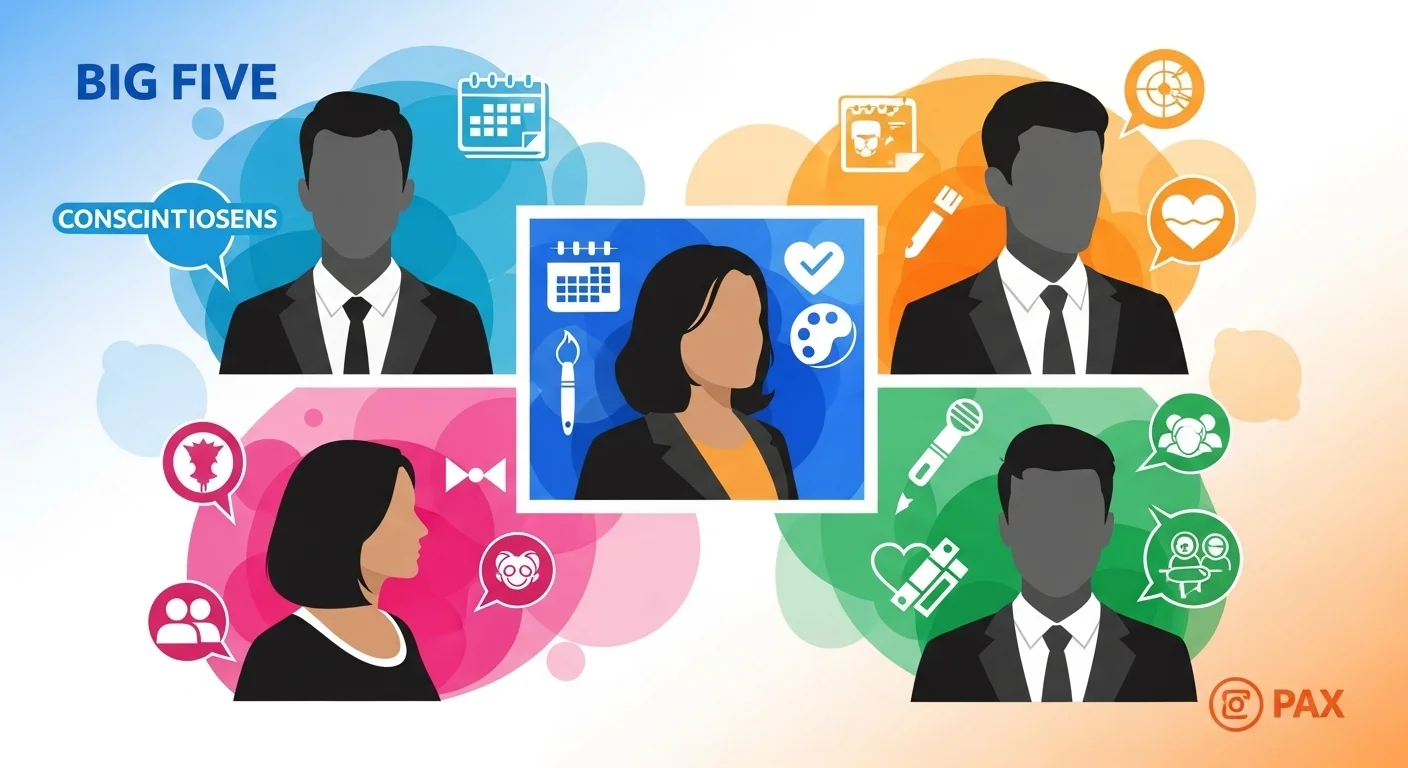
- Riddle: I am always on time, organized, and reliable. What Big Five trait do I exemplify?
Hint: It’s about being dependable.
Answer: Conscientiousness.
Explanation: Conscientiousness involves organization and reliability, part of the Big Five model.
- Riddle: I am open to new experiences, creative, and curious. What trait is this?
Hint: It’s one of the Big Five.
Answer: Openness to experience.
Explanation: Openness is linked to creativity and curiosity, as per the Big Five.
- Riddle: I am always worried about the future, anxious, and often nervous. What trait do I have?
Hint: It’s one of the Big Five.
Answer: Neuroticism.
Explanation: Neuroticism involves emotional instability and anxiety.
- Riddle: I am kind, compassionate, and always willing to help others. What trait is this?
Hint: It’s about being agreeable.
Answer: Agreeableness.
Explanation: Agreeableness reflects kindness and cooperation, part of the Big Five.
- Riddle: I am adventurous, like to take risks, and seek out new experiences. What trait do I have?
Hint: It’s related to sensation seeking.
Answer: Sensation seeking.
Explanation: Sensation seeking, studied by Zuckerman, involves thrill-seeking behavior.
- Riddle: I am shy, prefer small groups, and recharge by being alone. What trait is this?
Hint: It’s the opposite of extraversion.
Answer: Introversion.
Explanation: Introversion is characterized by preference for solitude, as per Eysenck’s model.
- Riddle: I am impulsive, seek thrills, and act without thinking. What trait do I have?
Hint: It’s related to low conscientiousness.
Answer: Impulsivity.
Explanation: Impulsivity reflects low self-control, often linked to low conscientiousness.
- Riddle: I am empathetic, nurturing, and value close relationships. What trait is this?
Hint: It’s often associated with femininity but is a personality trait.
Answer: Communalism.
Explanation: Communalism emphasizes relationships and empathy, as studied in personality psychology.
- Riddle: I am always the life of the party, love meeting new people, and am very outgoing. What trait do I have?
Hint: It’s one of the Big Five.
Answer: Extraversion.
Explanation: Extraversion involves sociability and energy, part of the Big Five.
- Riddle: I prefer solitude, enjoy deep thinking, and am often described as reserved. What trait might I have?
Hint: It’s the opposite of extraversion.
Answer: Introversion.
Explanation: Introversion is marked by introspection and low social stimulation needs.
Developmental Psychology Riddles
These riddles explore stages of human development.
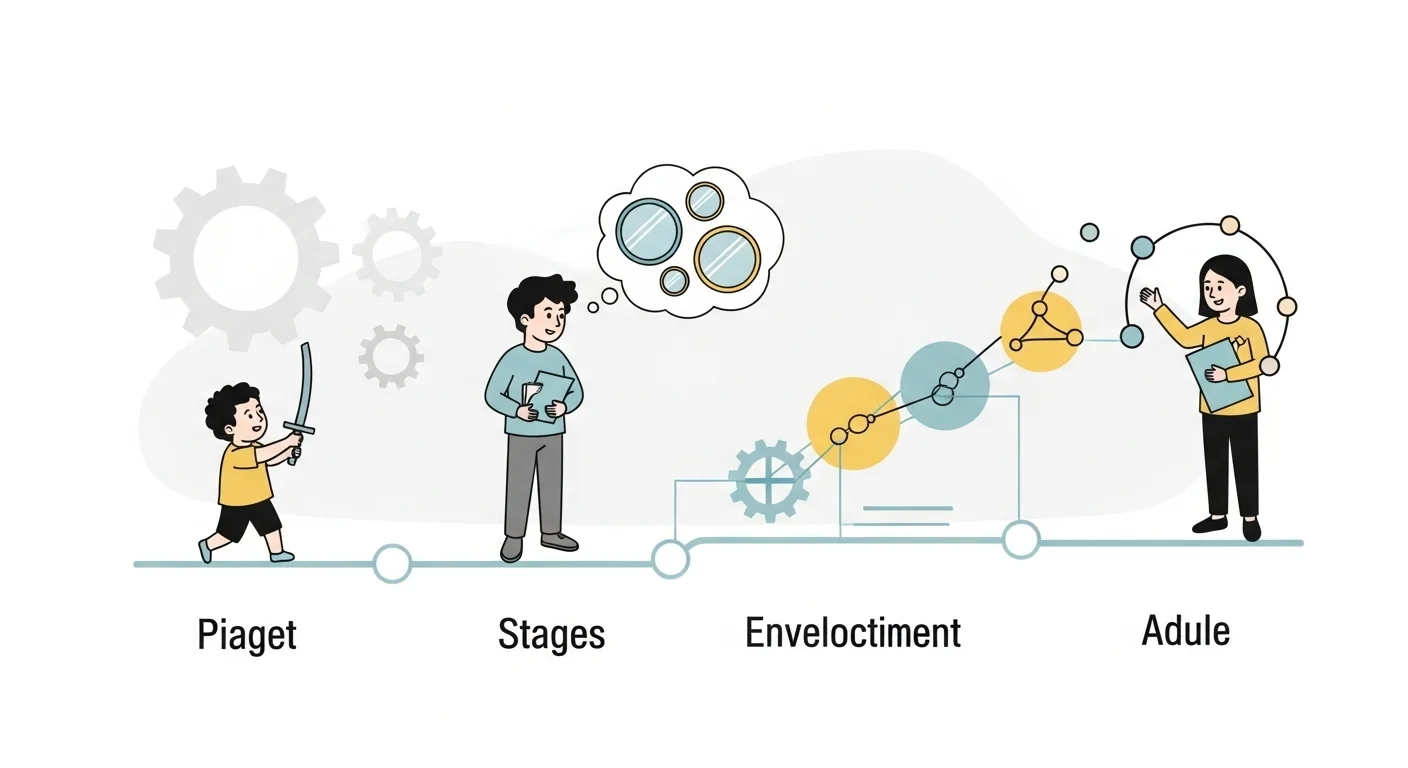
- Riddle: A child pretends a stick is a sword and fights imaginary dragons. What type of play is this?
Hint: It’s common in early childhood.
Answer: Imaginative or pretend play.
Explanation: Pretend play, studied by Piaget, fosters creativity in early childhood.
- Riddle: A teenager is very concerned with how others perceive them and feels self-conscious. What stage are they in?
Hint: It’s part of adolescent development.
Answer: Imaginary audience stage.
Explanation: David Elkind’s concept of the imaginary audience explains adolescent self-consciousness.
- Riddle: A child believes the moon follows them when they walk. What stage of cognitive development are they in?
Hint: It’s Piaget’s theory.
Answer: Preoperational stage.
Explanation: Piaget’s preoperational stage involves egocentrism, where children think the world revolves around them.
- Riddle: A teenager explores different identities and roles. What is this part of?
Hint: It’s Erikson’s stage.
Answer: Identity vs. Role Confusion.
Explanation: Erikson’s stage focuses on identity formation in adolescence.
- Riddle: A baby reaches for a toy hidden under a blanket, knowing it still exists. What concept have they grasped?
Hint: It’s a key milestone in infancy.
Answer: Object permanence.
Explanation: Piaget’s research shows object permanence develops in the sensorimotor stage.
- Riddle: A child says, “I runned to the park,” instead of “I ran.” What is this an example of?
Hint: It’s a language development phenomenon.
Answer: Overregularization.
Explanation: Overregularization occurs when children apply grammar rules too broadly.
- Riddle: A teenager believes they are unique and no one understands their feelings. What is this called?
Hint: It’s a cognitive distortion in adolescence.
Answer: Adolescent egocentrism.
Explanation: Elkind’s concept explains why teens feel uniquely misunderstood.
- Riddle: In Erikson’s stages, what crisis does a young adult face?
Hint: It’s about forming close relationships.
Answer: Intimacy vs. Isolation.
Explanation: Erikson’s stage focuses on building intimate relationships in young adulthood.
- Riddle: According to Piaget, when does a child develop the ability to think abstractly and reason hypothetically?
Hint: It’s the final stage.
Answer: Formal operational stage.
Explanation: Piaget’s final stage involves abstract thinking, typically from age 11 onward.
- Riddle: A child learns language by imitating and being corrected. What theory is this?
Hint: It’s a behaviorist approach.
Answer: Skinner’s operant conditioning.
Explanation: Skinner’s theory explains language acquisition through reinforcement.
Motivation and Emotion Riddles
These riddles delve into what drives behavior and emotional responses.

- Riddle: You work hard on a project to prove you can do it, not for external reward. What motivation is this?
Hint: It’s internal drive.
Answer: Intrinsic motivation.
Explanation: Intrinsic motivation drives actions for personal satisfaction, as studied by Deci and Ryan.
- Riddle: After a near-miss car accident, your heart races, and you feel a surge of energy. What is this response?
Hint: It’s the body’s reaction to stress.
Answer: Fight-or-flight response.
Explanation: This response, studied by Walter Cannon, prepares the body for danger.
- Riddle: You do something to avoid punishment, not because you enjoy it. What type of motivation is this?
Hint: It’s external.
Answer: Extrinsic motivation.
Explanation: Extrinsic motivation involves external rewards or punishments.
- Riddle: After running a marathon, you feel accomplishment and pride. What emotion is this?
Hint: It’s a positive emotion related to achievement.
Answer: Pride.
Explanation: Pride is a self-conscious emotion tied to achievement, as studied by Tracy and Robins.
- Riddle: You feel a rush of adrenaline before a presentation. What is this response?
Hint: It’s preparation for stress.
Answer: Fight-or-flight response.
Explanation: This physiological response prepares us for action, as per Cannon’s research.
- Riddle: You set a goal to study every day for a month, and you feel satisfied when you achieve it. What psychological concept drives this feeling?
Hint: It’s about achieving goals and self-regulation.
Answer: Self-efficacy.
Explanation: Self-efficacy, studied by Albert Bandura, is the belief in one’s ability to succeed, which drives satisfaction from achieving goals.
- Riddle: You feel a pang of sadness when you see someone else fail, even though it doesn’t affect you. What is this emotion?
Hint: It’s about sharing others’ feelings.
Answer: Empathy.
Explanation: Empathy involves feeling others’ emotions, as explored in research by Martin Hoffman.
- Riddle: You keep practicing a skill because it feels rewarding, even though you’re not perfect yet. What motivates you?
Hint: It’s about the process, not just the outcome.
Answer: Intrinsic motivation.
Explanation: Intrinsic motivation drives engagement for the sake of enjoyment, as per Deci and Ryan’s self-determination theory.
- Riddle: You feel anxious before a big decision but calm once you’ve made it. What phenomenon explains this?
Hint: It’s about decision-making and emotional relief.
Answer: Cognitive dissonance reduction.
Explanation: Making a decision reduces the tension of cognitive dissonance, as studied by Leon Festinger.
- Riddle: You strive to outperform your peers in a competition, driven by a desire to be the best. What theory explains this?
Hint: It’s about striving for achievement.
Answer: Achievement motivation theory.
Explanation: David McClelland’s theory highlights the drive to excel and compete, motivating performance.
Decision-Making and Judgment Riddles
These riddles explore how we make choices and judgments, often under uncertainty.
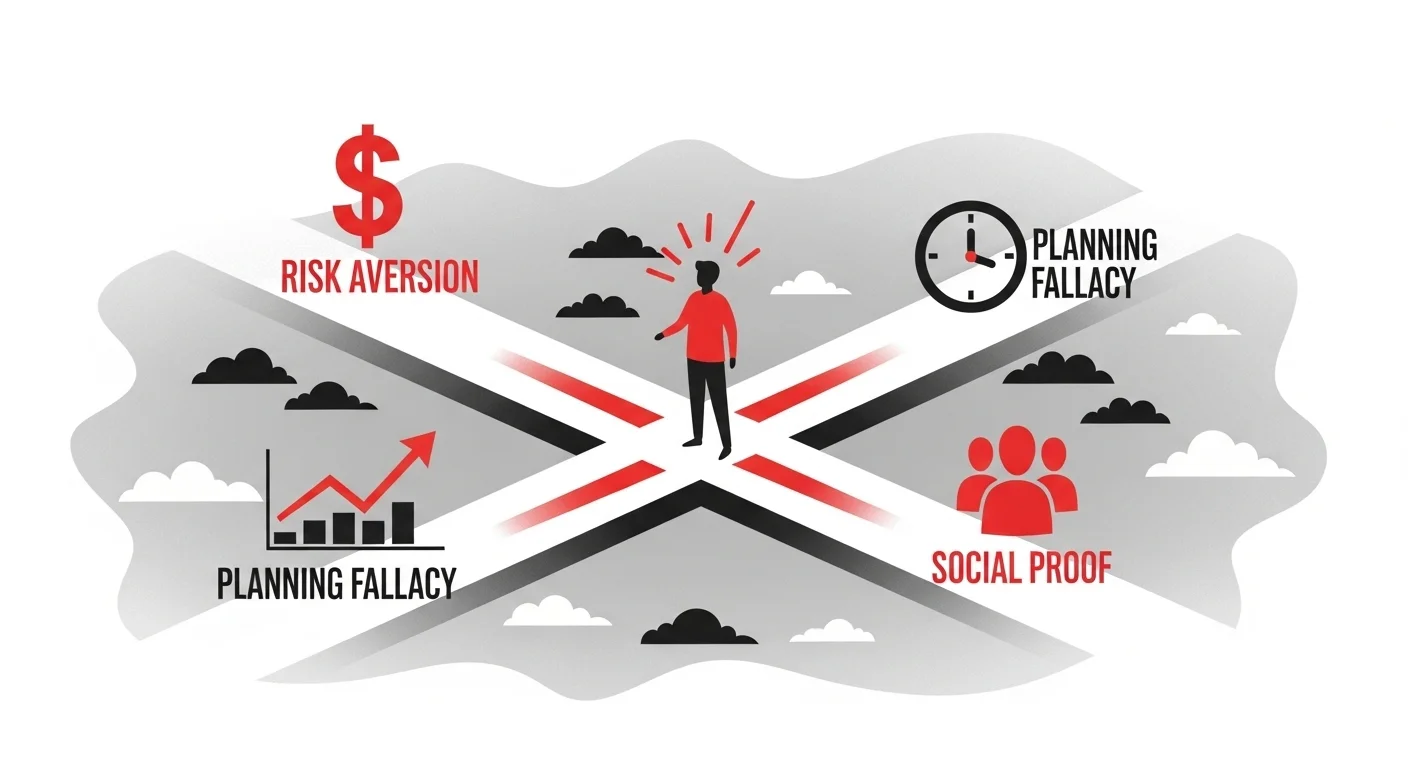
- Riddle: You choose a familiar brand over a cheaper alternative, even though they’re identical. What bias is this?
Hint: It’s about preferring what you know.
Answer: Familiarity bias.
Explanation: Familiarity bias leads us to prefer known options, as studied in consumer psychology.
- Riddle: You decide not to invest in a stock because you lost money on a similar one before. What bias is at play?
Hint: It’s about past experiences shaping decisions.
Answer: Anchoring bias.
Explanation: Anchoring bias occurs when past experiences unduly influence current decisions, as per Tversky and Kahneman.
- Riddle: You’re offered two choices: a sure $50 or a 50% chance of $100. You take the $50. What explains this?
Hint: It’s about avoiding risk.
Answer: Risk aversion.
Explanation: Prospect theory by Kahneman and Tversky shows people prefer certain gains over risky ones.
- Riddle: You choose a restaurant because it’s busy, assuming it must be good. What heuristic is this?
Hint: It’s about following the crowd.
Answer: Social proof heuristic.
Explanation: Social proof, studied by Robert Cialdini, leads us to follow others’ actions in uncertain situations.
- Riddle: You overestimate how quickly you’ll finish a task, even though you’ve been late before. What bias is this?
Hint: It’s about planning errors.
Answer: Planning fallacy.
Explanation: The planning fallacy, researched by Kahneman, involves underestimating task duration despite past experience.
- Riddle: You avoid a decision because both options seem equally bad. What is this state?
Hint: It’s about decision paralysis.
Answer: Choice overload.
Explanation: Choice overload occurs when too many options cause indecision, as studied by Barry Schwartz.
- Riddle: You pick a job with a higher salary over one you’d enjoy more. What theory explains this?
Hint: It’s about external rewards.
Answer: Extrinsic motivation theory.
Explanation: Extrinsic motivation prioritizes external rewards like money over intrinsic satisfaction.
- Riddle: You feel regret after choosing one option over another, even though both were good. What is this?
Hint: It’s about post-decision emotions.
Answer: Buyer’s remorse.
Explanation: Buyer’s remorse is regret after a choice, tied to cognitive dissonance.
- Riddle: You stick with a failing plan because you’ve already invested time in it. What bias is this?
Hint: It’s about commitment to past choices.
Answer: Sunk cost fallacy.
Explanation: The sunk cost fallacy drives persistence with bad decisions due to prior investment, as studied in behavioral economics.
- Riddle: You judge a person’s character based on one good deed. What bias is this?
Hint: It’s about generalizing from a single act.
Answer: Halo effect.
Explanation: The halo effect generalizes one positive trait to overall character, as per Edward Thorndike.
- Riddle: You assume a rare disease is more likely because you just read about it. What bias is this?
Hint: It’s about recent information.
Answer: Availability heuristic.
Explanation: The availability heuristic makes recent or vivid events seem more probable, as per Kahneman.
- Riddle: You make a quick decision without fully analyzing the options. What is this called?
Hint: It’s about intuitive choices.
Answer: Heuristic decision-making.
Explanation: Heuristics are mental shortcuts for quick decisions, studied in cognitive psychology.
Social Influence Riddles
These riddles focus on how others shape our behavior and beliefs.
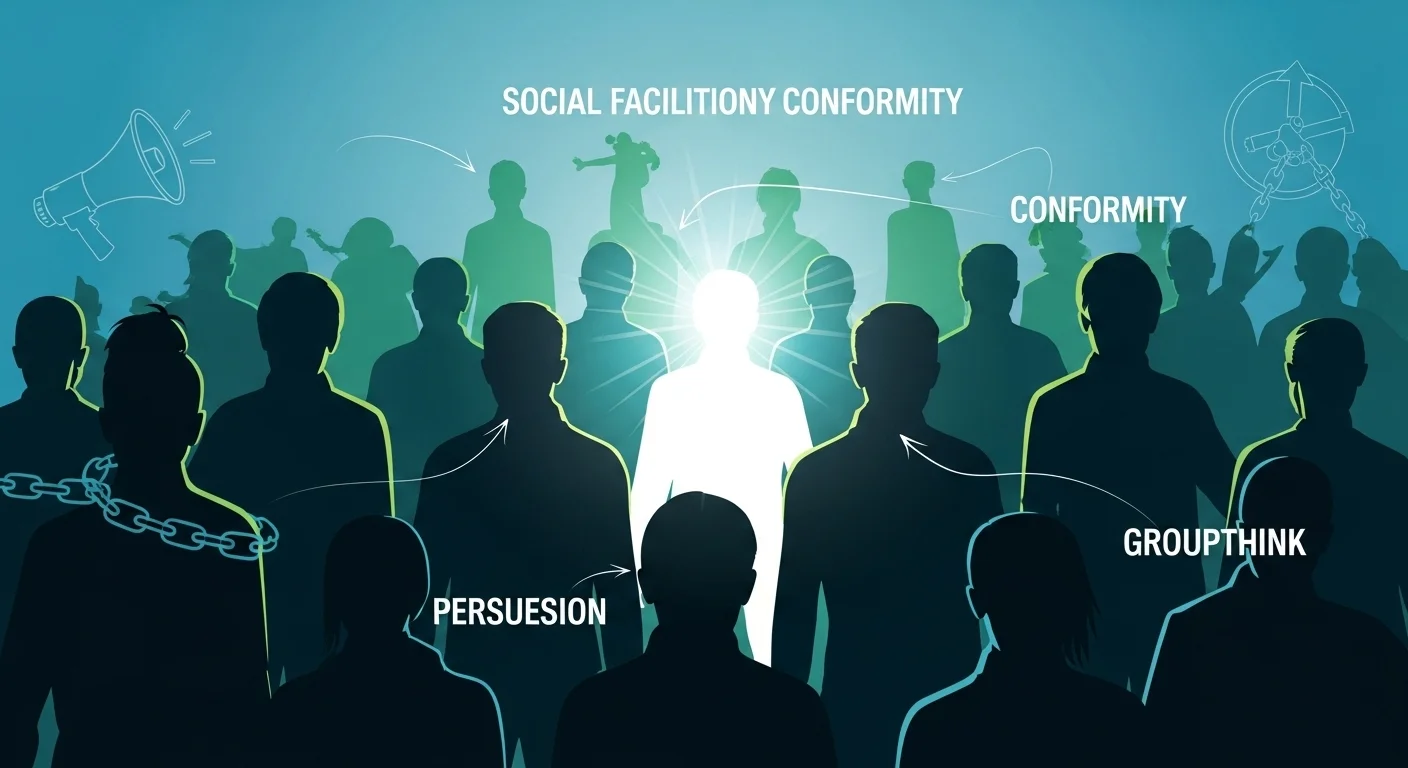
- Riddle: You agree with a group’s opinion, even though you know it’s wrong. What is this?
Hint: It’s about group pressure.
Answer: Conformity.
Explanation: Solomon Asch’s experiments showed conformity occurs under social pressure.
- Riddle: You obey an authority figure’s request, even if it feels wrong. What is this called?
Hint: It’s about following orders.
Answer: Obedience.
Explanation: Stanley Milgram’s studies demonstrated how people obey authority, even against their morals.
- Riddle: You help a stranger because you saw someone else do it first. What explains this?
Hint: It’s about modeling behavior.
Answer: Social learning.
Explanation: Albert Bandura’s social learning theory shows we learn by observing others.
- Riddle: You’re more likely to donate to a cause if others are donating too. What is this?
Hint: It’s about group behavior.
Answer: Social proof.
Explanation: Social proof, studied by Cialdini, drives us to follow others’ actions.
- Riddle: You change your opinion after a persuasive speech. What is this process?
Hint: It’s about changing attitudes.
Answer: Persuasion.
Explanation: Persuasion involves changing beliefs through communication, as studied by Carl Hovland.
- Riddle: You avoid criticizing a leader because others admire them. What bias is this?
Hint: It’s about group dynamics.
Answer: Groupthink.
Explanation: Groupthink, studied by Irving Janis, suppresses dissent to maintain group harmony.
- Riddle: You feel pressured to join a trend because everyone else is doing it. What is this?
Hint: It’s about social trends.
Answer: Bandwagon effect.
Explanation: The bandwagon effect drives people to adopt popular behaviors or beliefs.
- Riddle: You perform better at a task when others are watching. What is this called?
Hint: It’s about performance under observation.
Answer: Social facilitation.
Explanation: Social facilitation, studied by Norman Triplett, enhances performance in the presence of others.
- Riddle: You avoid helping someone in a crowd because you assume others will step in. What is this?
Hint: It’s about bystander behavior.
Answer: Bystander effect.
Explanation: The bystander effect, researched by Darley and Latané, shows diffusion of responsibility in groups.
- Riddle: You adopt a friend’s slang after spending time with them. What is this called?
Hint: It’s about unconscious imitation.
Answer: Chameleon effect.
Explanation: The chameleon effect involves mimicking others’ behaviors, as per Tanya Chartrand.
- Riddle: You feel pressured to laugh at a joke because everyone else is laughing. What is this?
Hint: It’s about aligning with the group.
Answer: Social conformity.
Explanation: Conformity aligns individual behavior with group norms, as shown by Asch.
- Riddle: You follow a crowd’s behavior in an unfamiliar setting. What heuristic is this?
Hint: It’s about following others in uncertainty.
Answer: Social proof heuristic.
Explanation: Social proof guides behavior in ambiguous situations, as per Cialdini.
Attention and Perception Riddles
These riddles focus on how we process sensory information and focus attention.
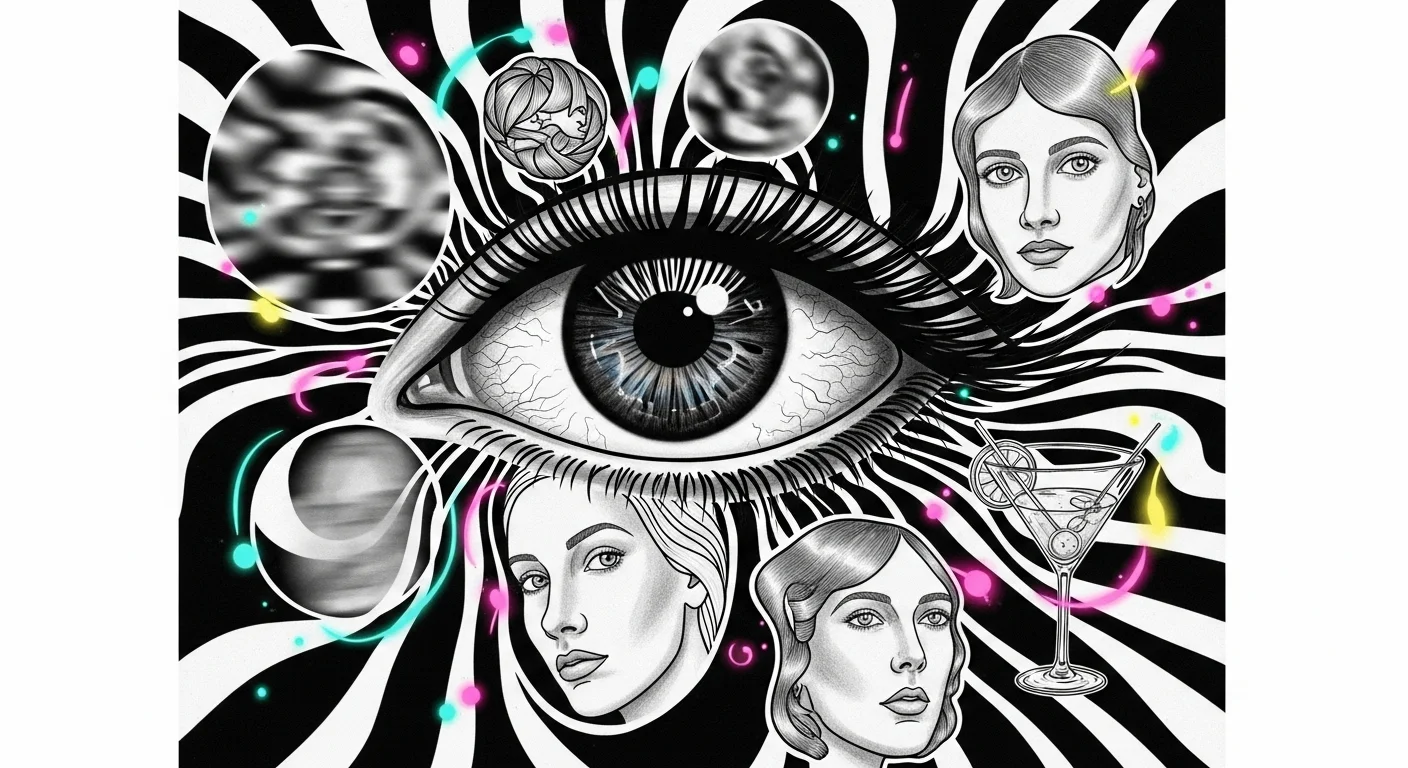
- Riddle: You don’t notice a change in a picture because you’re focused on something else. What is this?
Hint: It’s about missing obvious changes.
Answer: Change blindness.
Explanation: Change blindness, studied by Simons and Levin, occurs when attention misses visual changes.
- Riddle: You’re so focused on a task that you don’t hear someone calling your name. What is this?
Hint: It’s about selective focus.
Answer: Inattentional blindness.
Explanation: Inattentional blindness, researched by Mack and Rock, occurs when focus prevents noticing stimuli.
- Riddle: You see a pattern in random noise, like faces in clouds. What is this called?
Hint: It’s about seeing meaning where none exists.
Answer: Pareidolia.
Explanation: Pareidolia is the tendency to see patterns in random stimuli, a perceptual phenomenon.
- Riddle: Metallic taste in your mouth after touching a battery. What sense is this?
Hint: It’s not taste or touch alone.
Answer: Electroreception.
Explanation: Electroreception, though rare in humans, can cause sensory perceptions like metallic taste from electrical stimuli.
- Riddle: You focus on one conversation in a noisy room and tune out others. What is this ability?
Hint: It’s about selective hearing.
Answer: Cocktail party effect.
Explanation: The cocktail party effect, studied by Colin Cherry, allows selective attention to one auditory source.
- Riddle: You mishear a word because you expected a different one. What is this?
Hint: It’s about expectations shaping perception.
Answer: Perceptual set.
Explanation: Perceptual set biases perception based on expectations, as studied in cognitive psychology.
- Riddle: You see a dress as blue and black, but others see it as white and gold. What causes this?
Hint: It’s about lighting and color perception.
Answer: Color constancy illusion.
Explanation: Color constancy affects color perception under different lighting, as seen in viral optical illusions.
- Riddle: You don’t notice a typo in a sentence because you’re reading quickly. What is this?
Hint: It’s about overlooking details.
Answer: Inattentional blindness.
Explanation: Inattentional blindness causes us to miss details when attention is elsewhere.
- Riddle: You perceive a moving object as stationary because of flashing lights. What is this?
Hint: It’s a visual illusion.
Answer: Stroboscopic effect.
Explanation: The stroboscopic effect creates the illusion of stillness in motion, used in visual perception studies.
- Riddle: You focus on a single task and lose track of time. What is this state?
Hint: It’s about deep concentration.
Answer: Flow state.
Explanation: Flow, studied by Mihaly Csikszentmihalyi, is a state of complete immersion in a task.
Learning and Conditioning Riddles
These riddles explore how we learn through association and experience.
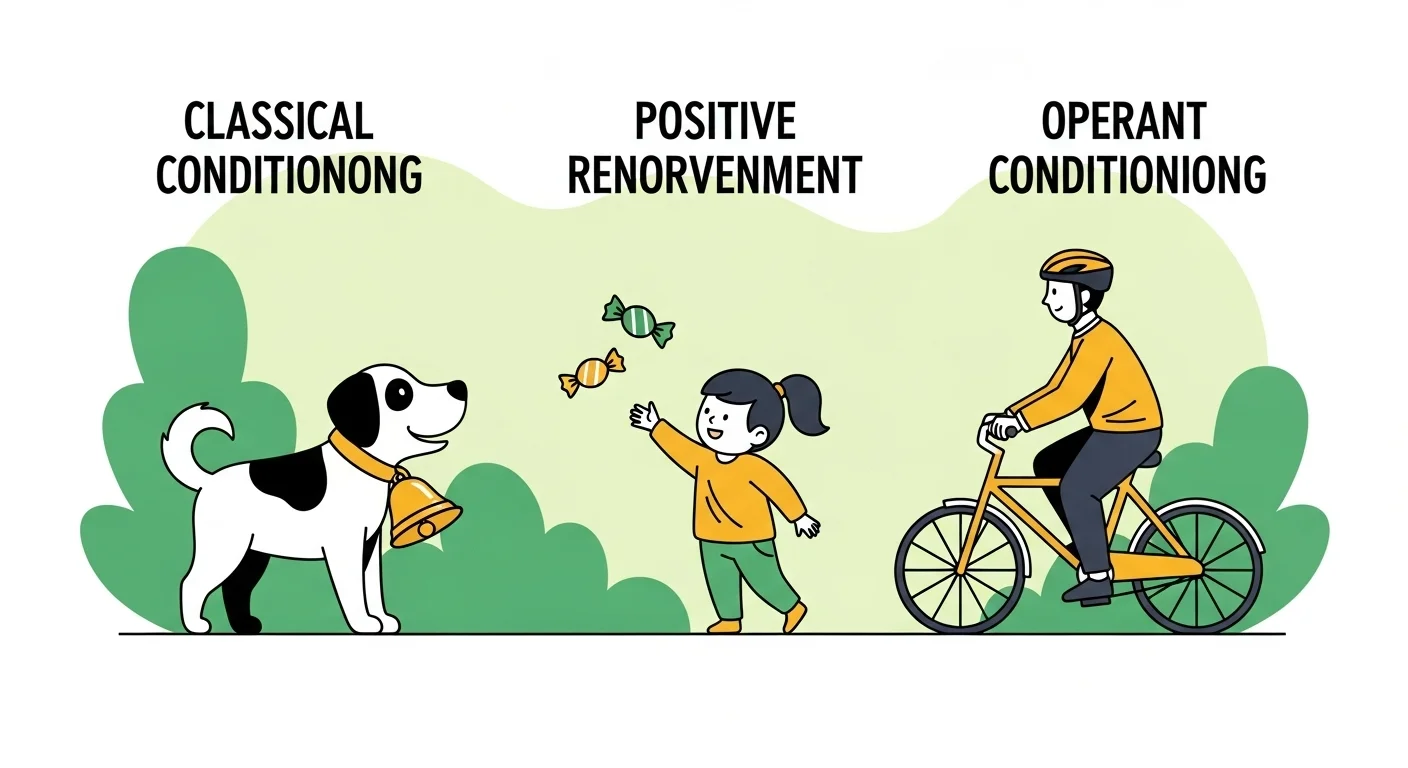
- Riddle: A dog salivates when it hears a bell, expecting food. What type of learning is this?
Hint: It’s about associating stimuli.
Answer: Classical conditioning.
Explanation: Pavlov’s classical conditioning pairs a neutral stimulus (bell) with a response (salivation).
- Riddle: You avoid a food after getting sick from it once. What type of learning is this?
Hint: It’s a one-trial learning process.
Answer: Conditioned taste aversion.
Explanation: Conditioned taste aversion, studied by John Garcia, links food to illness after one experience.
- Riddle: You learn to ride a bike by practicing repeatedly. What type of learning is this?
Hint: It’s about skill acquisition.
Answer: Operant conditioning.
Explanation: Operant conditioning, per B.F. Skinner, involves learning through repeated practice and feedback.
- Riddle: A child learns to say “please” after being rewarded with candy. What is this?
Hint: It’s about rewards shaping behavior.
Answer: Positive reinforcement.
Explanation: Positive reinforcement strengthens behavior through rewards, as per Skinner.
- Riddle: You stop checking your phone after it stops giving notifications. What is this?
Hint: It’s about behavior fading.
Answer: Extinction.
Explanation: Extinction occurs when a conditioned behavior fades without reinforcement, as per Skinner.
- Riddle: You learn a new skill by watching an expert do it first. What type of learning is this?
Hint: It’s about observation.
Answer: Observational learning.
Explanation: Observational learning, studied by Bandura, involves learning by watching others.
- Riddle: A rat presses a lever to avoid a shock. What type of learning is this?
Hint: It’s about avoiding negative outcomes.
Answer: Negative reinforcement.
Explanation: Negative reinforcement strengthens behavior by removing an aversive stimulus, per Skinner.
- Riddle: You associate a song with a happy memory and feel good when you hear it. What is this?
Hint: It’s about emotional associations.
Answer: Classical conditioning.
Explanation: Classical conditioning links neutral stimuli (song) with emotional responses (happiness).
- Riddle: You improve at a game after repeated practice, even without feedback. What is this?
Hint: It’s about trial and error.
Answer: Latent learning.
Explanation: Latent learning, studied by Edward Tolman, occurs without immediate reinforcement.
- Riddle: A child stops tantrums after being ignored. What is this called?
Hint: It’s about removing attention.
Answer: Extinction.
Explanation: Extinction reduces behavior when reinforcement (attention) is withheld, per Skinner.
Abnormal Psychology Riddles
These riddles explore psychological disorders and their manifestations.
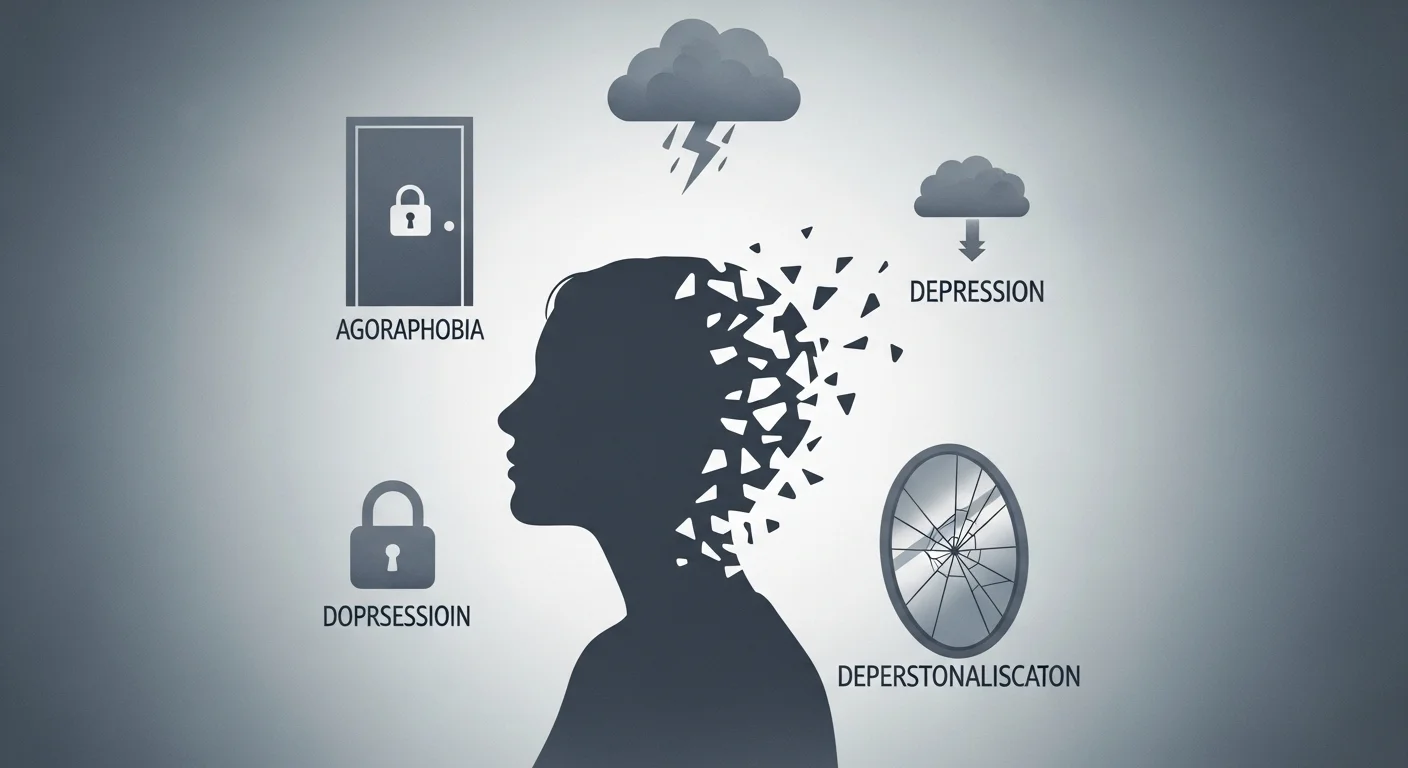
- Riddle: You fear leaving your house, even for simple tasks. What disorder might this be?
Hint: It’s an anxiety disorder.
Answer: Agoraphobia.
Explanation: Agoraphobia involves fear of situations where escape is difficult, as per DSM-5.
- Riddle: You experience sudden, intense fear with no clear cause. What is this?
Hint: It’s a sudden anxiety attack.
Answer: Panic attack.
Explanation: Panic attacks are sudden, intense fear episodes, often linked to panic disorder.
- Riddle: You repeatedly check if the door is locked, unable to stop. What disorder is this?
Hint: It’s about repetitive behaviors.
Answer: Obsessive-compulsive disorder (OCD).
Explanation: OCD involves intrusive thoughts and compulsive behaviors, as per DSM-5.
- Riddle: You feel intense sadness for weeks, losing interest in life. What might this be?
Hint: It’s a mood disorder.
Answer: Major depressive disorder.
Explanation: Major depressive disorder involves persistent sadness and loss of interest, per DSM-5. For related puzzles, explore disease riddles.
- Riddle: You hear voices telling you what to do, but no one is there. What could this be?
Hint: It’s a psychotic symptom.
Answer: Schizophrenia.
Explanation: Auditory hallucinations are a hallmark of schizophrenia, as per DSM-5.
- Riddle: You avoid social situations due to fear of embarrassment. What disorder is this?
Hint: It’s an anxiety disorder.
Answer: Social anxiety disorder.
Explanation: Social anxiety involves fear of social scrutiny, as studied in clinical psychology.
- Riddle: You have flashbacks of a traumatic event that disrupt your daily life. What is this?
Hint: It’s a trauma-related disorder.
Answer: Post-traumatic stress disorder (PTSD).
Explanation: PTSD includes flashbacks and hyperarousal from trauma, per DSM-5.
- Riddle: You cycle between extreme highs and lows in mood. What disorder might this be?
Hint: It’s a mood disorder with extremes.
Answer: Bipolar disorder.
Explanation: Bipolar disorder involves manic and depressive episodes, as per DSM-5.
- Riddle: You feel detached from yourself, like you’re watching your life from outside. What is this?
Hint: It’s about disconnection from self.
Answer: Depersonalization.
Explanation: Depersonalization is a dissociative symptom, often linked to stress or trauma.
- Riddle: You hoard items, unable to throw anything away, even trash. What disorder is this?
Hint: It’s about excessive accumulation.
Answer: Hoarding disorder.
Explanation: Hoarding disorder involves difficulty discarding possessions, as per DSM-5.
Best Psychology Riddles for Different Audiences
- For Beginners: Use simple riddles such as tip-of-the-tongue phenomenon to understand the principle of basic psychology.
- For Educators: Make students solve critical thinking tasks with the help of insight problems such as the bookworm riddle.
- For Therapists: Emotional state riddles such as the spotlight effect are able to create a discussion in any therapy session.
- For Team Building: There are good social riddles to use to create communication skills in groups and they are known as the silent argument.
Explore More Psychology Riddles
Are you addicted to these brain teasers? Further explore the ways below:
- Books: Find works such as Thinking, Fast and Slow by Daniel Kahneman to learn about cognitive biases or go to a textbook book on psychology to take a glimpse of thought experiments.
- Websites: Come up with extra brain teasers at Riddles Academy or Psychology Today or deepen your riddle-solving skills with how to solve riddles like a pro.
- Apps: Play mind-pumping apps such as Lumosity, which have psychology puzzles on a mobile gadget.
- Create Your Own: Make up riddles along the lines of a concept such as the cognitive dissonance or the bystander effect. Take the example: Why do people just turn a deaf ear when someone is crying to be heard in a crowd? (Answer: The bystander effect wherein the responsibility is inhibited in a crowd.)
Transparency Note: There could be affiliate links in some links, though I only share resources that I have personally delved in without finding anything valuable. This is a research and experience based post, which was last updated in July 2025. To ask me questions you can go to the Contact Page on my blog.
Conclusion
Psychology problems are not only fun, they are the gateway to the intricacies of the human species mind. Taking these puzzles, you are able to put your thinking to the test and reflect on how we perceive, remember and interact. Having been obsessed with psychology more than five years, I hope that this bundle will make you look further to find out the secrets of mind. Why wait to solve the next riddle today?
Frequently Asked Questions (FAQs)
What makes a riddle a psychology riddle?
A psychology riddle consists of such concepts as cognitive biases or social behaviors, and the solver is expected to solve it in a way used by a psychologist. To give an example, my baseball riddle actually got me a lesson in confirmation bias.
How can solving psychology riddles benefit me?
They enhance critical thinking, and your knowledge of human behavior gets deeper. I have employed them in my workshop to generate interesting discussions.
Are psychology riddles suitable for children?
Others are suitable as simple social riddles and can only be modified to suit kids, but many suit adults or teenagers who have basic knowledge in psychology. For kid-friendly puzzles, try why riddles are important for kids’ mental development.
Where can I find more psychology riddles?
Check Riddles Academy or psychology textbooks. I’ve sourced many from academic resources like the APA’s psychology resources.
Can creating my own psychology riddles help me learn?
Absolutely! Crafting riddles, as I’ve done for this post, requires deep understanding, enhancing your grasp of psychological concepts.
Which is the world’s toughest psychology riddle?
It’s subjective, but insight problems like the nine-dot problem (connect nine dots with three lines) are notoriously tough due to self-imposed mental constraints.